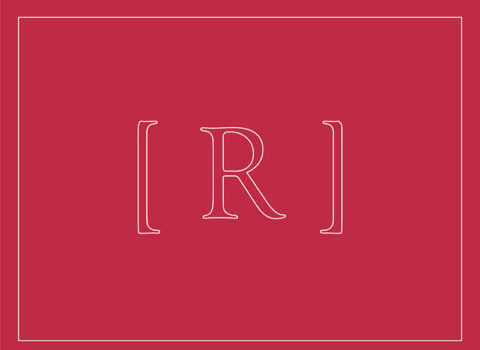On Vampire Capitalism and the Fear of Inoculation
Why efforts to contain disease are often seen as conspiracies to sell vaccines
“Capital,” Marx wrote, “is dead labor, that, vampire-like, only lives by sucking living labor, and lives the more, the more labor it sucks.” Vampires sucked the blood of the sleeping in Ancient Greece and spread plague in Medieval Europe, but after the industrial revolution, novels began to feature a new kind of monster, the well-dressed gentleman vampire who would become an enduring mascot for capitalism. During his 2012 presidential campaign, venture capitalist Mitt Romney, whose status as living or undead was the subject of some sporting debate, frequently found himself compared to a vampire. After transforming into a “vulture capitalist” in the primaries, he became a full-fledged vampire capitalist in Obama’s campaign ads. “It was like a vampire,” a steelworker said of the company Romney co-founded, Bain Capital, “it came in and sucked the life out of us.”
The thought of an ambitious vampire sucking the life out of honest workers was resonant in a country where the value had so recently been sucked out of nearly every home. We were reminded of the vampirism behind the housing crisis, which was set off by a rash of “predatory” loans to homeowners who lacked the ability to repay them. These loans, bundled and sold to investors, came to be known as “toxic assets” when they lost their value.
The understanding that capital can itself be toxic leads, almost inevitably, to a fear of capitalism polluting every endeavor. At the close of the 2009 H1N1 pandemic, when it was clear that the flu had not caused the high mortality rates health officials had initially feared it would, the chair of the health committee for the Council of Europe accused the World Health Organization of colluding with pharmaceutical companies and creating a “false pandemic” to sell vaccines. The WHO met this accusation with equanimity, their spokeswoman saying, “Criticism is part of the outbreak cycle.” The organization then invited twenty-nine independent influenza experts from twenty-six countries to evaluate its actions during the pandemic.
Those experts would find no evidence that commercial interests had influenced the WHO or attempted to influence it, and no evidence that the WHO had wrongfully exaggerated the pandemic. Their report explained that one of the reasons certain precautions taken by the WHO could seem, in hindsight, out of proportion with the actual threat posed by the pandemic is that the organization had been preparing for a possible outbreak of avian influenza H5N1, a highly lethal strain, and initial reports of the fatality rate of novel H1N1 had suggested it might also be quite high. “Influenza viruses are notoriously unpredictable,” the chairman of the committee noted in his introduction to the report, adding that we were “lucky” this time. “In the Committee’s view,” the report concluded, “the inference by some critics that invisible commercial influences must account for WHO’s actions ignores the power of the core public-health ethos to prevent disease and save lives.”
![Army making pneumonia vaccine, Washington, D.C. [1937]](https://harpers.org/wp-content/uploads/2012/12/ArmyPneumonia620.jpg)
Army making pneumonia vaccine, Washington, D.C., 1937. Photograph by Harris & Ewing, courtesy the Library of Congress. The original caption for the photograph reads: “The Army Medical Center is preparing a pneumonia vaccine for the first mass scale inoculation ever attempted in the battle against the disease. Volunteers from the [Civilian Conservation Corps] will be the human guinea pigs in the experiment. The vaccine, which is 10 times as costly as gold, is being made for distribution this fall to all CCC enrollees who desire inoculations, officers expect to have enough vaccine to safeguard 300,000 individuals.”
Observing that we have waged wars on poverty and drugs as well as cancer, Susan Sontag writes, “Abuse of the military metaphor may be inevitable in a capitalist society, a society that increasingly restricts the scope and credibility of appeals to ethical principle, in which it is thought foolish not to subject one’s actions to the calculus of self-interest and profitability.” In such a society, preventative measures to protect public health require elaborate justifications. War-making, Sontag suggests, is one of the few activities for which we are not expected to consider practicality and expense. Declaring a metaphorical war on a disease is how we justify the inevitable impracticalities of protecting the most vulnerable among us.
My son was a newborn infant during the H1N1 pandemic, and he would be three years old by the time the Centers for Disease Control released their estimate of how many people worldwide had died from H1N1 in 2009. The death toll calculated by the CDC, somewhere between 150,000 and 500,000, made the severity of H1N1 comparable to a typical outbreak of seasonal influenza. But this flu had killed young people disproportionately. The pattern of deaths, with 80 percent among people below the age of sixty-five, made it unusual. 9,707,000 years of potential human life, the CDC would note, had been lost in the pandemic.
“Follow the money,” I have heard any number of reasonable people say in defense of ideas about vaccination that, without the suggestion of a vampiristic force behind them, would seem to depend on the collusion of countless individuals in unethical action more grievous than predatory lending. That so many of us find it entirely plausible for a vast network of researchers and health officials and doctors worldwide to willfully harm children for money is evidence of what capitalism is really taking from us. Capitalism has already impoverished us culturally. And capitalism has already impoverished the working people who generate wealth for others. But when we begin to see the pressures of capitalism as innate laws of human motivation, when we begin to believe that everyone is owned, then we are truly impoverished.

























































































